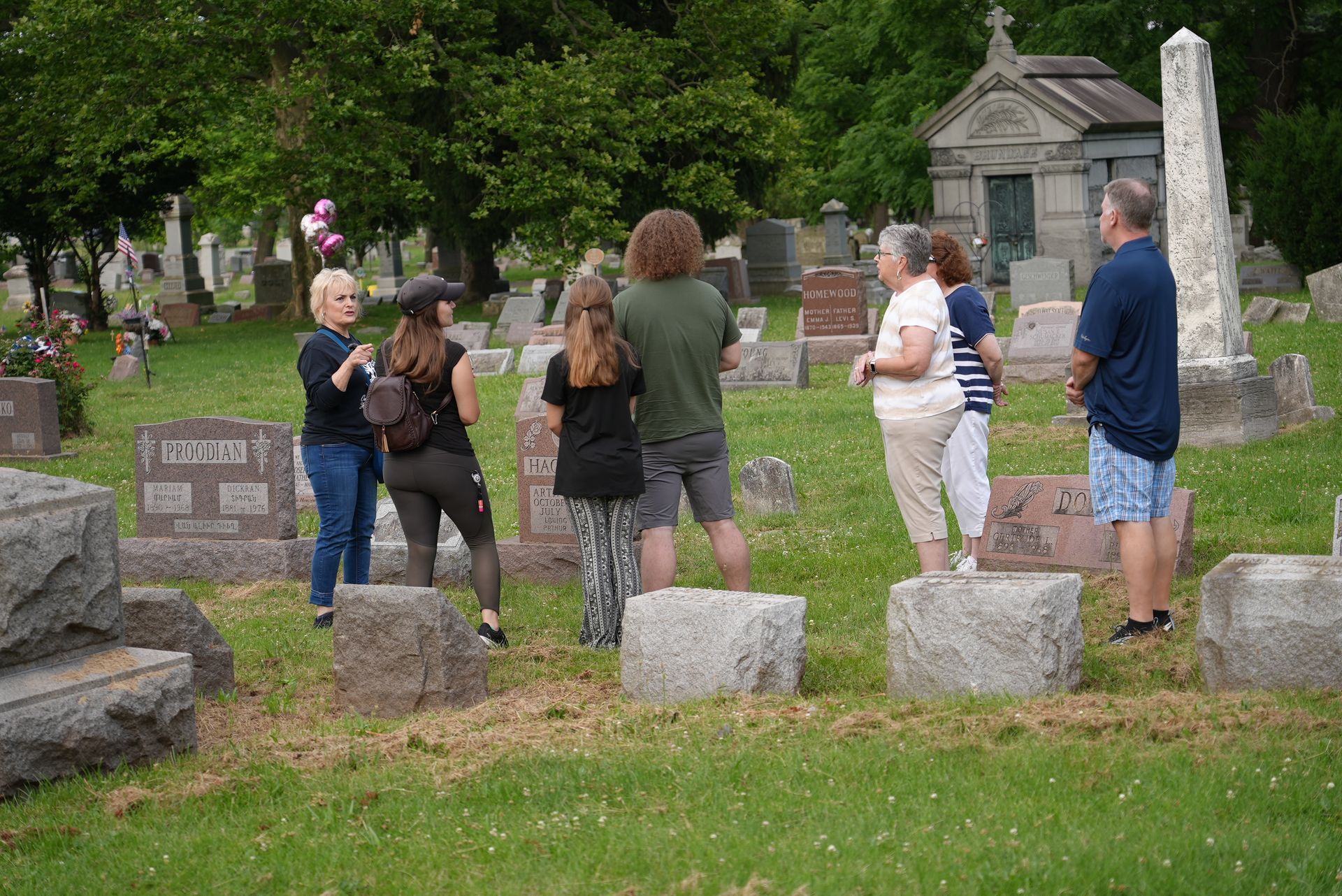Our Residents
Oakwood Cemetery is a treasure trove of history, resting on 18.5 acres of hallowed ground. Here lie the remarkable figures whose stories not only illuminate their individual lives but also weave the rich tapestry of our region's history. We take immense pride in sharing these captivating tales, which embody the spirit and legacy of our community.
Bloneva Bond

Bloneva Bond was a dedicated and influential leader in her community, serving as the president of the Niagara Falls Chapter of the NAACP for six years. She was a founder and charter member of the New York State Community Action Program (NYCAP) Board of Directors and contributed significantly to the Niagara Coalition, the Council of Christians and Jews, the United Way of Niagara Central Budget Committee, the Niagara Community Center Scholarship Committee, and the Congress of Racial Equality. Her commitment extended to being an active member of the Niagara Falls Council of Churches and People for Progress.
Governor Nelson Rockefeller appointed Bond to the State Health Council and the Health Planning Commission, recognizing her expertise and dedication. She also served on the Niagara Falls Bicentennial Committee and a Minority Task Force at the Niagara Chapter of the American Red Cross. In recognition of her community service, Bond received a Doctor of Humanities Degree from Niagara University in 1988 and was twice honored with the Levy Brothers Award for Community Service.
Bond broke barriers as the first African American woman to serve on the Niagara Falls Board of Education from 1979 to 1984. A successful businesswoman, she owned and operated her own beauty salon and worked as a Social Worker for Niagara County for 17 years. During the 1971 uprising at Attica Prison, Bond was called upon to witness and support the prisoners' negotiations with authorities.
A devoted member of the New Hope Baptist Church for 49 years, Bond served in various roles, including Organist, Choir Director of the Chapel Choir, and Director of Youth Activities. Her influence extended beyond her professional achievements, serving as a mentor and role model to countless young women in the Niagara Falls community.
R. Nathaniel Dett
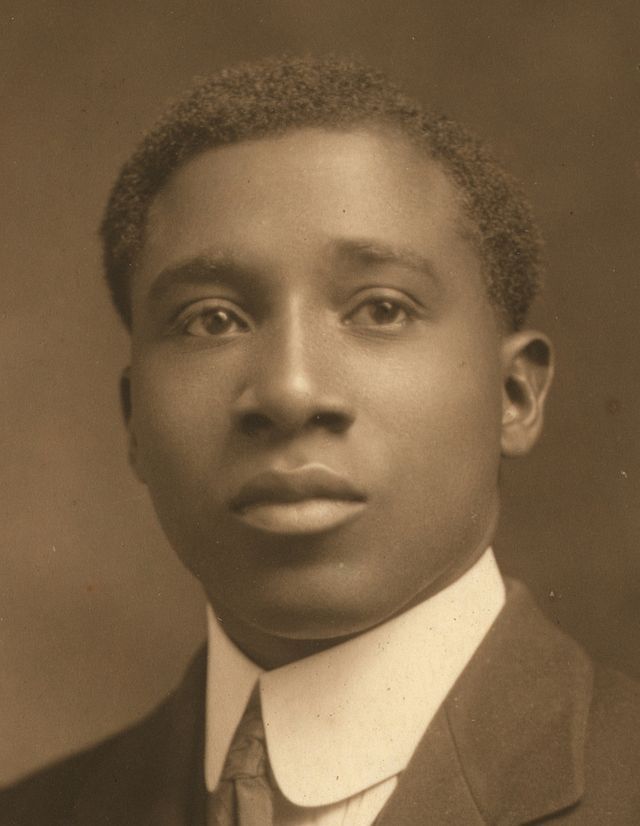
R. Nathaniel Dett was a trailblazing composer and musician, renowned for his significant contributions to classical music and his success as one of the most accomplished Black composers of his time. Born in Drummondville, Ontario, Dett's legacy is honored with his final resting place in Fairview Cemetery in Niagara Falls, Ontario, while his father, Robert T. Dett, is interred in Oakwood Cemetery, Niagara Falls, NY.
The Dett family played an integral role in the Niagara Falls community, operating a tourist home in Niagara Falls, NY. This business not only supported their livelihood but also positioned the family as prominent and respected members of the local society.
Throughout his career, Dett was celebrated for his unique ability to blend classical music forms with African American spirituals and folk songs, creating compositions that were both innovative and culturally rich. His dedication to music and education left an indelible mark on the arts, influencing generations of musicians and composers.
Dett's contributions extended beyond composition; he was also a respected educator and advocate for the preservation and recognition of African American musical heritage. His work and achievements continue to inspire and resonate within the world of music and beyond.
Lillian Garabedian

Lillian Garabedian, a native of Niagara Falls, emerged as a shining talent in the world of dramatic opera. Her journey to acclaim began with her victory in the Voices of Tomorrow singing contest in 1955. Garabedian honed her craft at Fredonia State College, where her exceptional talent earned her a teaching fellowship. She further pursued her passion by obtaining a master’s degree from Indiana University.
In 1959, Garabedian's dedication and skill were recognized with a prestigious Fulbright grant, enabling her to study in Germany. Her professional career flourished with solo performances at the Bavarian State Opera and notable appearances with the Buffalo Philharmonic Orchestra. She also graced the stages of the renowned Munich festivals and the Marlboro Music Festival in 1963.
Garabedian’s promising career was tragically cut short in 1965 when she died in a plane crash en route to a concert in South Carolina. Her untimely death was a significant loss, mourned by both local residents and the many admirers who had been touched by her remarkable performances. Despite her brief life, Lillian Garabedian's legacy endures through the indelible impact she made on the world of opera and the hearts of those who heard her sing.
Colonel Charles B. Gaskill
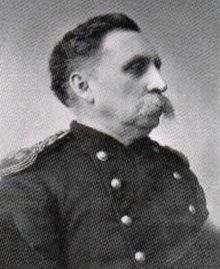
Colonel Charles B. Gaskill, born on November 28, 1841, in Wilson, Niagara County, NY, was a prominent military leader and businessman whose influence reached both local and national levels. Growing up with limited educational opportunities, Gaskill’s first significant endeavor was publishing the Niagara City Herald. His career took a pivotal turn with the outbreak of the Civil War when he volunteered for the 44th New York Infantry. Despite his youth, his military capabilities quickly earned him a commission as a second lieutenant in 1861 and a subsequent promotion to first lieutenant.
During the Battle of Gaines' Mill in 1862, Gaskill was seriously wounded and captured by the enemy at Savage Station, VA. After being exchanged and recovering from his injuries, he continued his service, ultimately becoming the colonel of the 78th United States Colored Infantry. He was honorably mustered out in 1865, having been brevetted major and lieutenant colonel for his meritorious conduct in battle.
Post-war, Gaskill married Helen I. Sherwood and initially settled on a plantation in Mississippi before re-entering the army in 1866. He served as commandant at Jackson Barracks in New Orleans and Fort Mason in North Carolina, acting as assistant adjutant general during the Reconstruction era under General Nelson A. Miles.
Returning to Niagara County in 1870, Gaskill embarked on numerous business ventures that spurred the industrial growth of Niagara Falls. He constructed the first flour mill utilizing the hydraulic canal in 1875, laying the groundwork for the Cataract City Milling Company. He also co-founded the Pettebone Paper Company and played a pivotal role in the Niagara Falls Power Company, becoming its first president. His efforts were crucial in harnessing the power of the Falls for industrial use.
Gaskill's vision extended to transportation as well. He was instrumental in converting the local horse car line into a modern electric railway, serving as president of the Niagara Falls and Suspension Bridge Railway Company. His leadership in this area significantly improved the infrastructure and connectivity of Niagara Falls.
In addition to his business acumen, Gaskill was deeply involved in civic affairs. He served as president of the village of Niagara Falls in the late 1880s, where his administration was noted for its firm enforcement of law and order. Later, as a member of the Board of Education, he introduced the teachers' pension system, reflecting his commitment to community welfare.
Despite losing his considerable fortune during the 1893 financial panic, Gaskill's resilience and dedication remained unshaken. He continued to engage in public service and support local initiatives until his death on October 8, 1919, at the age of 77.
Gaskill’s legacy is preserved not only in his military and business achievements but also in the profound impact he had on the development of Niagara Falls. He and his wife, Helen, had three daughters: Cora, Flora, and Alice, who carried forward the family's esteemed name. Colonel Charles B. Gaskill remains a figure of great historical significance, remembered for his leadership, vision, and unwavering commitment to his community.
Louis H. F. Hamilton
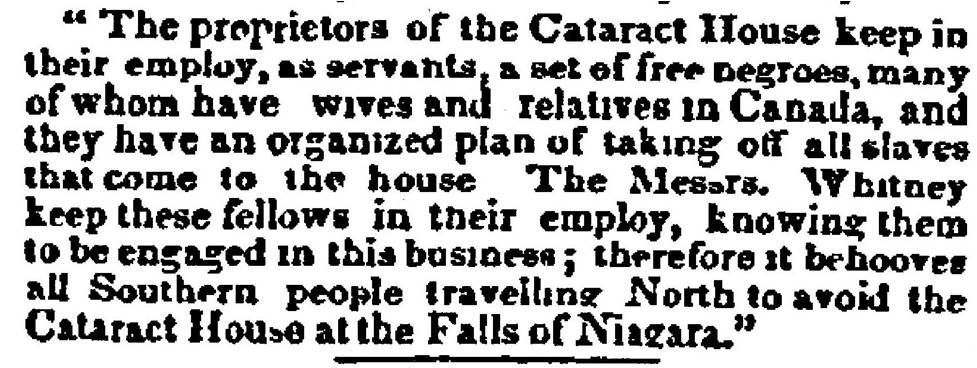
Louis Henry Fetigue Hamilton, known as L.H.F. Hamilton, was a quiet yet pivotal figure in the history of Niagara Falls and the Underground Railroad. Born around 1823 in Washington, D.C., likely to Catherine Bell, an enslaved woman, Hamilton's life and actions exemplify the hidden heroes of history who worked tirelessly for freedom and justice.
Hamilton, alongside his wife Clarissa Condol, who was born in 1821 in Lyme, Connecticut, was deeply involved in the Underground Railroad during the mid-19th century. Clarissa came from a family of ardent abolitionists, with her father, William Condol, noted for his contributions to the cause. The couple's union in Geneva, New York, marked the beginning of a partnership that would significantly impact the lives of many escaping slavery.
By 1850, the Hamiltons were working as waiters at the Cataract House in Niagara Falls, a known hub for Underground Railroad activities. The hotel staff, many of whom were African American, played crucial roles in assisting fugitive slaves across the Niagara River to Canada. The 1850 Census of Niagara Falls lists numerous brave individuals, identified by their skin color and southern birthplaces, who were part of this clandestine network.
L.H.F. and Clarissa Hamilton operated several businesses, including a tailor shop, dining hall, catering service, and the "Hamilton’s General Agency and Intelligence Office," located opposite the Cataract House. This establishment likely served as a front for their Underground Railroad activities, providing a place where African Americans in need of assistance could seek help discreetly.
Their efforts were part of a broader, well-organized movement in Niagara Falls, a critical last stop on the Underground Railroad. The Fugitive Slave Act of 1850 imposed severe penalties on those aiding escaped slaves, making the work of the Hamiltons and their colleagues both dangerous and vital.
The Hamilton family was well-respected in the Niagara Falls community. They had several children, including Catherine, Lewis, and Henry. Henry, a photographer and news dealer, operated "Hamilton’s Photographic Portraits" on Main Street in the late 1880s.
One of the most intriguing connections in the Hamilton family history is through Clarissa’s sister, Dorothy Condol, who married William Bell Fossett. Fossett, born at Monticello in 1821, was the son of Joseph Fossett and Edith Hern, enslaved individuals of Thomas Jefferson. It is believed that Joseph Fossett was freed by Jefferson’s will, hinting at possible familial ties to Jefferson himself. William Fossett, like Hamilton, was active in the Underground Railroad, particularly in Cincinnati, and may have continued his efforts in Niagara Falls alongside his brother-in-law.
L.H.F. Hamilton passed away on May 14, 1903, at the age of 79, followed by Clarissa on January 6, 1915, at 90. They are buried in Oakwood Cemetery, not far from other Underground Railroad participants, leaving behind a legacy of bravery and dedication to the cause of freedom.
The story of Louis Henry Fetigue Hamilton and his family, once hidden in the annals of history, now sheds light on the extraordinary efforts of those who fought for freedom and justice, often at great personal risk. Their contributions to the Underground Railroad and the Niagara Falls community remain a testament to their courage and unwavering commitment to human rights.
Charles B. Hyde
Charles B. Hyde was a prominent businessman and philanthropist in Niagara Falls, New York. As the owner of a successful paper company located at the corner of Sugar Street (now Hyde Park Boulevard) and Pine Avenue, Hyde made significant contributions to the local economy. Upon retiring, he sold his company and invested in a large tract of land on the outskirts of the city.
In 1921, Hyde suffered a fatal stroke. In his will, he stipulated that the land be donated to the city to create a park in his name upon the death of his wife. The city of Niagara Falls subsequently purchased additional lands, resulting in what is today the largest urban park in the state of New York outside of Central Park in New York City.
Hyde Park was officially dedicated on Saturday, September 7, 1929. During the dedication ceremony, Superintendent of Schools James F. Taylor praised the city's decision to provide recreational facilities for the community, noting that increased leisure time for residents could be spent in healthful pursuits at the park.
In addition to the park, Hyde's legacy is also honored by Hyde Park Elementary School, which opened in 1928 and remains operational across the street from the park.
Charles B. Hyde rests in the mausoleum, his contributions to the community remembered through the enduring green space and educational institution that bear his name.
Indiana Hunt Martin
Indiana Hunt Martin, a Niagara Falls native, served with distinction in the Women’s Army Corps (WAC) during World War II. Born in Georgia, Indiana moved to Niagara Falls at the age of five, where she attended local schools, including South Junior and Niagara Falls High School, graduating in 1940. Despite family challenges, she took on the responsibility of raising her younger sister and brother at a young age. Known for her resilience and maturity, Indiana enlisted in the WAC at the age of 22.
Indiana was assigned to the 6888th Central Postal Directory Battalion, also known as the “Six Triple Eight.” This battalion was the first and only all-female African-American WAC unit to be deployed overseas during World War II. Under the command of Maj. Charity Edna Adams Earley, the first African American woman to achieve the rank of lieutenant colonel in the U.S. Army, the battalion played a crucial role in ensuring the morale of American troops stationed in the European Theater of Operations by sorting undelivered mail.
Stationed in Birmingham, England, the Six Triple Eight faced the daunting task of sorting through two to three years’ worth of undelivered mail. Working in rat-infested and unheated storage facilities, the battalion sorted approximately 195,000 pieces of mail per day for three months. Their efforts continued in Rouen and Paris, France, where they completed similar tasks. Over 15 months of service, the battalion faced numerous challenges, including German U-boat threats, bombing raids, and the loss of three members in a vehicle accident.
After the war, Indiana Hunt Martin returned to Niagara Falls, where she worked for the Unemployment Office for 41 years before retiring and moving to Maryland with her daughter, Janice Martin. Indiana's story and the legacy of the Six Triple Eight have been recognized through various books, articles, documentaries, and a monument at the Buffalo Soldier Military Park in Fort Leavenworth, Kansas. Recently, efforts have been made to award the Congressional Gold Medal to the members of the Six Triple Eight and to designate a post office in Buffalo, New York, in Indiana's honor.
Indiana Hunt Martin passed away in September and will be interred at Oakwood Cemetery in Niagara Falls, next to her parents. Her service and dedication to her country and fellow soldiers serve as an enduring reminder of the sacrifices made by those who served in the Greatest Generation. Her legacy lives on through the continued recognition and appreciation of the contributions of the Six Triple Eight and the impact of their work on the morale of American troops during World War II.
Frank A. Jenss
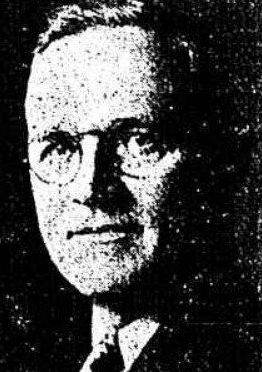
Frank Jenss, the son of immigrants who arrived in America in 1881, made a significant impact on the business and political landscape of his community. In 1916, Jenss opened the Jenss Bros. department store at the southwest corner of Main and Division streets, following the success of a dry goods store he had established with his brother Paul in Lockport. This venture marked the beginning of Jenss's influence in the local economy.
In collaboration with other businessmen, Jenss purchased the property across from his store on Main Street, where they built the Bellevue Theater. His entrepreneurial spirit did not stop there; he also opened the Williams Hotel, further contributing to the city's development.
Jenss's involvement in business naturally led him to politics, where he served as an alderman, city councilman, and eventually mayor over a span of 20 years. Known for his spirited demeanor, Jenss often found himself at odds with Mayor William Laughlin. In one notable incident in 1926, Jenss vehemently opposed the mayor's request for $240 to cover a dinner and flowers for the visiting Queen Maria of Romania, leading Mayor Laughlin to personally foot the bill. Despite their rivalry, Jenss eventually succeeded Laughlin and served as mayor from 1932 to 1935.
During Jenss's tenure as mayor, significant projects like the city incinerator plant and Hyde Park stadium were completed. One of his proudest achievements came in 1923, when, as a councilman, he chaired a successful fundraising campaign that raised $250,000 to build a nurses' home for Mount St. Mary’s hospital. In recognition of his efforts, the sisters of the hospital presented him with a large gold-plated loving cup, a treasured possession for the rest of his life.
Jenss was also known for his progressive labor practices, including eliminating late-night work hours for his employees. In 1950, Frank and Paul Jenss sold their business, marking the end of an era for the Jenss Bros. department store.
Frank Jenss passed away in 1961, leaving behind a legacy of entrepreneurship, public service, and community development that significantly shaped the city he loved.
Johnny Main

Johnny Main, a Niagara Falls native, gained international acclaim as a ventriloquist, earning the title of World's Best Ventriloquist in 1981 from his peers. Known for his versatility and engaging performances, Johnny's career spanned over thirty years, during which he brought laughter and joy to audiences worldwide.
Main's talent took him across the United States, Canada, and the Far East, with notable performances on several cruise lines through the Caribbean, and repeat engagements in hotel casinos in South America and the West Indies. His reputation for excellence also earned him repeat performances at Parliament Hill in Ottawa, Canada, and appearances on ABC's Good Morning America.
Johnny Main was not only a performer but also a creator. He crafted many of the lifelike character dummies used in his act, and his skill in creating these figures extended to designing dummies for other ventriloquists as well.
Beyond his own successful career, Johnny was known for his generosity and willingness to mentor others. One of the most notable figures who benefited from his guidance was Jeff Dunham, now a famous ventriloquist in his own right. Early in his career, Dunham sought Johnny's instruction and advice, and Johnny, always ready to support and lend a helping hand, played a pivotal role in his development.
Johnny Main's legacy as a ventriloquist is marked not only by his own achievements but also by the impact he had on the next generation of entertainers. His life and work continue to inspire and entertain, leaving an indelible mark on the world of ventriloquism.
The Pavloff Family
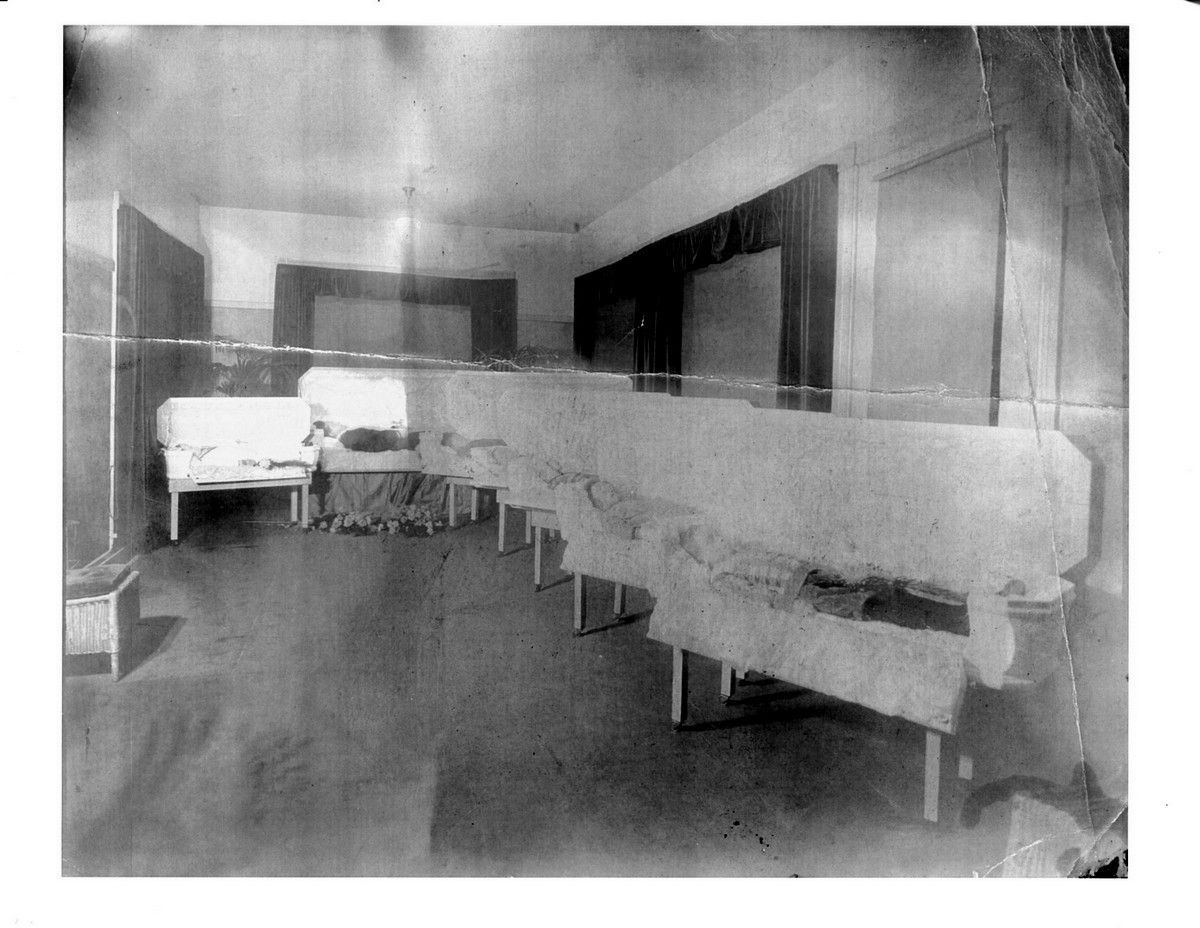
The seven headstones at Oakwood Cemetery stand like silent sentinels, preserving the memory of the Pavloff family, whose tragic fate over 80 years ago left an indelible mark on Niagara Falls. On a fateful night in July 1927, a devastating accident at the Sugar Street grade crossing claimed the lives of Mary Pavloff and her six children. The city was deeply moved by the tragedy, which remains etched in the hearts of its residents.
The Tragic Accident
The accident occurred when the Pavloff family’s car was struck by a New York Central passenger train at the Sugar Street crossing, now Hyde Park Boulevard. Samuel Pavloff, the father and sole survivor, was left to bear the unimaginable grief of losing his wife and children. The community’s response was profound, as thousands gathered to pay their respects.
The Funeral and Burial
The funeral service was marked by overwhelming sorrow. The Pavloff family was initially to be interred in Holy Trinity Cemetery, with some members in consecrated ground and others in unconsecrated ground. Samuel Pavloff’s insistence on a unified resting place for all his loved ones led to a temporary halt of the burial, as he rejected the separation of graves. The family was later interred together at Oakwood Cemetery.
Community Impact
The Niagara Falls Gazette documented the profound impact of the tragedy. A large crowd attended the funeral services at the Cobler Funeral Home and Holy Trinity Church, with mourners filling the streets. The detailed account from the Gazette captures the deep grief of Samuel Pavloff, who had to face the harrowing reality of his loss while recovering from injuries sustained in the crash.
Legacy and Remembrance
The Pavloff family’s story continues to resonate with the Niagara Falls community. The poignant photograph of the Pavloff family at the Cobler Funeral Home, donated by great-granddaughter Corrine Squires, serves as a solemn reminder of the human cost of the accident. The legacy of Mary Pavloff and her children lives on through these memorials, ensuring that their memory is preserved for future generations.
Their resting place at Oakwood Cemetery is a testament to the enduring impact of their story, reminding us of the fragility of life and the strength of community in the face of unimaginable loss.
Judge Augustus Porter
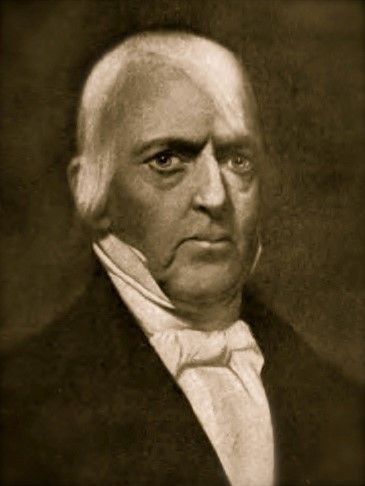
Judge Augustus Porter, born in January 1769 in Salisbury, Connecticut, stands as one of the foundational figures of Niagara Falls. A trailblazer in the development and promotion of the region, Porter’s impact on the area was profound and multifaceted.
Porter’s journey to Niagara Falls began in 1795 when he first visited the area. His work as a surveyor and civil engineer was instrumental in shaping the early infrastructure of Western New York. He laid out townships, surveyed crucial roads, and contributed to the pioneering of Great Lakes transportation. His visionary efforts led to the establishment of the first mills to harness the power of the Niagara River and the construction of the hydraulic canal, marking significant milestones in the city’s industrial and economic development.
A prominent figure in both public and private sectors, Porter was the first county judge of Niagara County, appointed in 1808. He also served as the first postmaster of what would later become Niagara Falls. His contributions extended to various domains, including the construction of the Portage Road and the establishment of the first saw mill on the river shore in 1803. Porter’s business ventures also included owning a fleet of vessels and securing the contract for carrying mails from Utica to Fort Niagara in 1802.
Porter’s family played a significant role in his life and legacy. He initially married Lavinia Steele, with whom he had a son, Augustus S. After Lavinia’s passing, he married Jane Howell, and together they had two sons and two daughters: Albert H., Peter B., Jr., Lavinia, and Jane S.
One of Porter’s most notable achievements was acquiring Goat Island in 1816, which remained in the Porter family until it became part of the Niagara Reservation in 1885. The Porter residence on Buffalo Avenue, originally built in 1808 and later rebuilt after a fire during the War of 1812, served as a center of hospitality and a testament to his enduring legacy.
Porter’s influence extended beyond his lifetime. His brother, Gen. Peter B. Porter, also made significant contributions to the region, further solidifying the Porter family’s legacy in Western New York. Judge Augustus Porter passed away in 1849 at the age of 80, leaving behind a lasting impact on Niagara Falls and its development.
Porter’s pioneering spirit and contributions to the growth and prosperity of Niagara Falls are commemorated in the city’s history, reflecting his role as a key architect of its early success.
Col. Peter Augustus Porter
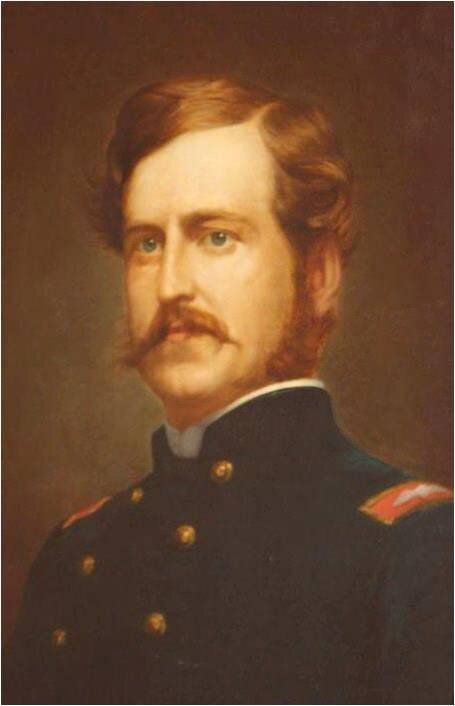
Col. Peter Augustus Porter, born on February 23, 1827, in Black Rock, Erie County (now part of Buffalo, New York), was a distinguished figure in both the business and military spheres of 19th-century America. The son of Peter Buell Porter and Letitia Breckinridge, Porter graduated from Harvard College in 1845. Following his studies, he furthered his education at the universities of Heidelberg and Breslau in Germany, completing his studies in 1849.
Upon returning to the United States, Porter became actively involved in the business and social life of Niagara Falls. His contributions to the community were significant until the onset of the Civil War, which marked a pivotal turn in his career.
Porter married Mary "Polly" Cabell Preston Breckenridge on March 30, 1852, in North Carolina. Together, they had a son, Peter A. Porter. After Mary’s death in 1854, Porter remarried in November 1859 to Josephine M. Morris, daughter of George Morris. They had two children, Laetitia H. Porter and George M. Porter.
In 1861, Porter was serving as a member of the New York Legislature and was nominated for Secretary of State. However, he chose to dedicate himself to the Union cause by raising a regiment, which became the 129th New York Volunteer Infantry. In 1863, the regiment was reorganized as the 8th New York Heavy Artillery, with Porter commissioned as Colonel.
Porter’s regiment was incorporated into the Army of the Potomac under General Ulysses S. Grant. He participated in the grueling Wilderness campaign and the intense Battle of Cold Harbor. During this battle, Porter was severely wounded, sustaining six gunshot wounds while bravely leading his regiment against Confederate entrenchments. His body lay in front of enemy lines for two days before being recovered by five valiant soldiers from his command.
Col. Peter Augustus Porter was brought back to his home and was laid to rest near one of the soldiers who recovered his body, LeRoy Williams. Porter’s valor and dedication to his country are remembered as a testament to his courage and sacrifice during one of America's most challenging times.
Major General Peter Buell Porter
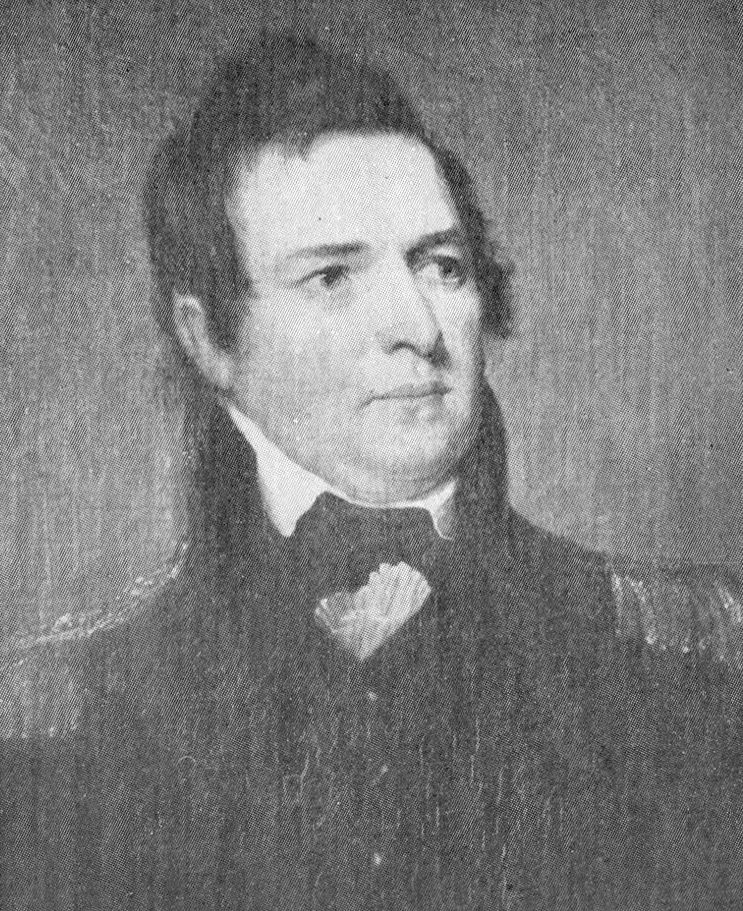
Major General Peter Buell Porter, born on August 4, 1773, in Salisbury, Connecticut, stands out as one of the most influential figures in early 19th-century American military and public life. A Yale College graduate of 1791, Porter began his career in law and public service in Canandaigua, New York. His early involvement in local politics included serving various offices before becoming a member of the New York Assembly in 1802.
Porter moved to Black Rock (now part of Buffalo) in 1809, where he continued his impactful career. Elected as a Democrat to the Eleventh and Twelfth Congresses from March 4, 1809, to March 3, 1813, Porter was a close ally of Henry Clay and played a significant role as chairman of the House Committee on Foreign Relations. His leadership and advocacy were instrumental in the lead-up to the War of 1812, including the resolution for its declaration. Porter was a prominent "War Hawk," advocating for the war effort alongside other leading figures of the time.
During the War of 1812, Porter was a key military leader, participating in crucial battles such as Chippewa, Niagara, Lundy's Lane, and Fort Erie. For his valor, he was awarded a gold medal by Congress and a gold-handled sword by the State of New York. He was promoted to brigadier general by Governor Daniel D. Tompkins and, after the Battle of Lundy's Lane, was breveted a major general. President James Madison appointed him as a major general in the U.S. Army in 1815.
Porter's influence extended beyond the battlefield. He was a member of the committee that decided on the inland canal project from the Hudson River to Lake Erie, demonstrating his commitment to the state's long-term interests over personal business. He also played a role in early commerce in the Niagara Frontier and Lake Erie.
After resigning from Congress in 1816 to serve as a U.S. Commissioner under the Treaty of Ghent to establish the northern border, Porter became Secretary of War under President John Quincy Adams from June 21, 1828, to March 9, 1829. In the 1830s, he was re-elected to the New York Assembly to address issues with the Holland Land Company.
In 1836, Porter moved to Niagara Falls, where he and his brother, Judge Augustus Porter, owned Goat Island and surrounding lands. These holdings later became part of the Niagara Reservation established by the state in 1885. Fort Porter, located in Black Rock and named in his honor, was an important military site before its removal for the Buffalo-Fort Erie Peace Bridge.
Late in life, Porter married Letitia Grayson, daughter of former Attorney-General Breckenridge of Kentucky. They had two children: Peter A. Porter, who was a distinguished Civil War officer, and Elizabeth Porter. General Porter passed away on March 20, 1844, leaving behind a legacy of remarkable public service and military leadership.
Captain Joel Robinson
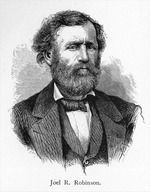
Captain Joel Robinson, a daring and skilled riverboat pilot, is best remembered for his extraordinary navigation of the Maid of the Mist II through the treacherous waters of the Niagara River during the Civil War. Born around 1820, Robinson's career was marked by his deep knowledge of the Niagara River and its formidable rapids.
In 1861, amidst the financial difficulties faced by W. O. Buchanan, the owner of the Maid of the Mist II, Robinson's expertise became crucial. The steamship, soon to be auctioned, was purchased by a Montreal businessman who required the vessel to be transported to Queenston, Ontario. This daunting task involved navigating the Great Gorge Rapids, the Whirlpool, and the Lower Niagara Rapids—an endeavor considered foolhardy by many due to the dangers presented by these powerful rapids.
Robinson, who had extensive experience piloting the Maid of the Mist II and a profound understanding of the river's unpredictable nature, rose to the challenge. On June 6, 1861, with engineer James Jones and mechanic James McIntyre as his crew, Robinson embarked on the perilous journey. The vessel faced tumultuous conditions, with waves reaching up to thirty-nine miles per hour, a feat neither the ship nor its crew had previously encountered. Despite the intense and dramatic voyage, including an accident where the boat's smokestack was damaged by cables from an old suspension bridge, Robinson successfully delivered the Maid of the Mist II to Queenston, avoiding the American sheriff who sought to confiscate it.
Earlier in his career, Robinson had demonstrated remarkable bravery by walking out into the rapids above the American Falls with only an iron staff for support. He landed on a small rocky island in the middle of the channel, which was later named Robinson Island in his honor. His contributions to the safety of those on the river were significant; he not only rescued many from peril but also recovered the bodies of those who could not be saved.
Following his daring feat with the Maid of the Mist II, Robinson retired from his career and lived in seclusion. He passed away in 1863, just two years after his historic journey.
Captain Robinson's legacy is commemorated by a distinctive zinc monument, also known as white bronze, located in Oakwood Cemetery. These monuments, popular in the late 1800s and early 1900s, have proven to be resilient over the years. Robinson's marker can be found by turning left upon entering the cemetery gates from Portage Road and following the road on the north side to the area between Sections 4 and 5.
Captain Joel Robinson remains celebrated for his fearless navigation of the Niagara River and his heroic contributions to river safety.
Annie Edson Taylor

Annie Edson Taylor, born on October 24, 1838, in Auburn, New York, is renowned for her audacious and historic feat of becoming the first person to go over Niagara Falls in a barrel and survive. A former schoolteacher with a knack for dramatic ventures, Taylor's life was marked by resilience and a quest for financial stability.
Before her famous plunge, Taylor experienced a series of challenging events. She had been on a stagecoach robbed by Jesse James' gang, managing to conceal nearly a thousand dollars in her dress hem undetected. Her marriage to David Taylor was short-lived due to his death in the Civil War, and she subsequently worked as a dance instructor and teacher in various locations. As her financial situation became increasingly desperate, Taylor sought an unconventional solution to her problems.
Inspired by the idea of making a quick and honest fortune, Taylor conceived a plan to go over Niagara Falls in a barrel. Her first attempt on October 23, 1901, was thwarted by unfavorable weather conditions and strong winds. However, undeterred, she made a second attempt the following day.
On October 24, 1901, Taylor, then 63 years old, embarked on her daring journey. The barrel, equipped with a harness and cushions for protection, was launched from a boat at Port Day. Despite facing tumultuous waters and high winds, Taylor's barrel navigated through the Canadian rapids and over the Horseshoe Falls. Her voyage covered a mile through the rapids before plunging 158 feet down the falls.
Remarkably, Taylor survived the fall with only minor injuries, including a severe scalp laceration and soreness from the impact. Her survival was attributed to the careful design of the barrel, which was weighted with an anvil to ensure it landed upright.
Although Taylor hoped that her spectacular stunt would lead to fame and fortune, the financial rewards she anticipated never materialized. She faced significant struggles afterward, including exploitation by a manager who profited from her feat with a younger substitute. Taylor's health deteriorated, and she lived her later years in poverty. She spent her final days at the Niagara County Infirmary and passed away on April 29, 1921.
Taylor's legacy endures, not only for her daring and historic accomplishment but also for her role in the annals of Niagara Falls history. She is buried in Oakwood Cemetery, Niagara Falls, alongside other notable figures such as Carlisle D. Graham, Captain Matthew Webb, and Francis Abbott.
To visit Annie Edson Taylor's marker, enter the cemetery gates from Portage Road, follow the road on the south side until the first fork, and look for her grave in the third row at the point of the fork.
Richard Toles
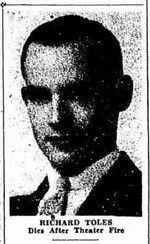
Richard Toles, a 34-year-old motion picture projectionist, met an untimely and tragic end on January 21, 1949, when a fire broke out in the projection booth of the Capitol Theater on Niagara Street. His death, reported in the Niagara Falls Gazette, was attributed to shock caused by severe burns sustained during the incident.
Toles was working in the projection booth with his colleague, Cecil Tittle, when a film being rewound suddenly ignited. Tittle managed to escape and initially thought Toles would follow, but when he realized Toles was still inside, he risked his own safety to rescue him. Despite Tittle’s efforts and the prompt response of the fire department’s inhalator crew, Toles succumbed to his injuries later that night at Mt. St. Mary's Hospital.
The fire, of unknown origin, caused approximately $150 in damage and was extinguished by theater employees using a chemical extinguisher. The incident led to the cancellation of the evening’s performance, but patrons exited the theater in an orderly fashion.
A longtime resident of Niagara Falls, Toles moved to the area from his native Hornell, New York, at the age of six. He was a graduate of Niagara Falls High School and had served in the radio division of Bell Aircraft Corporation during World War II. He was survived by his wife, Ruth; his children, Barbara Ann and Richard G., Jr.; his brother, Robert, of Buffalo; his father, David, of Alfred; and an aunt, Mrs. Edwin Barling, of Niagara Falls.
Richard Toles' funeral service was held at the Cornell and Daggett chapel, with interment in the mausoleum at Oakwood Cemetery. His remains were later transferred to Hornell, his hometown, where he was finally laid to rest.
In the months following his death, there were reports of Toles’ spirit visiting the old Capitol Theater, which led a contractor to attempt to provide him with closure. Despite the contractor’s efforts, it remains unknown if Toles’ spirit still lingers at the theater. His brief but poignant connection to Oakwood Cemetery and the mystery surrounding his final resting place make Richard Toles a notable figure in the annals of local history.
Homan Walsh
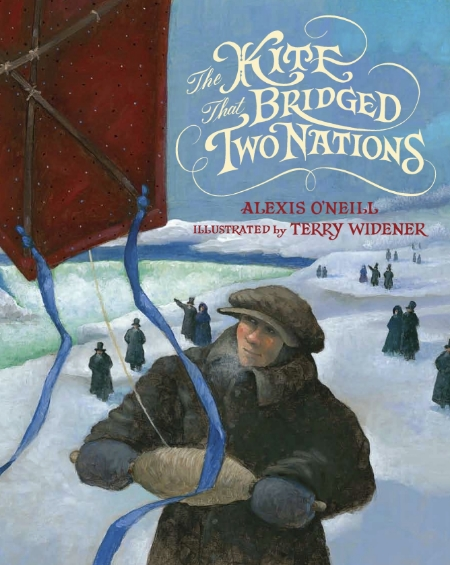
Homan Walsh, an innovative spirit and a pioneer in the field of engineering, is best remembered for his remarkable achievement in 1848 that transformed the trade and commerce landscape between the United States and Canada. At just 16 years old, Walsh performed an extraordinary feat of ingenuity by successfully flying a kite across the Niagara Gorge, a critical step in advancing infrastructure in the area.
In the mid-19th century, Niagara Falls was beginning to emerge as a major tourist destination. With the growing flow of people and goods, the need for a bridge spanning the 800-foot-wide, 200-foot-deep gorge became evident. However, constructing such a bridge posed significant challenges, particularly given the Class 6 rapids of the Niagara River and the absence of modern equipment like helicopters.
To overcome this obstacle, Theodore Hulett, then a bridge superintendent and later a judge, proposed a novel solution: fly a kite across the gorge. He offered a $10 prize to the first person able to complete the task. Seizing the opportunity, young Homan Walsh took up the challenge. On January 30, 1848, Walsh successfully flew his kite from the Canadian side to the American side, utilizing the easterly winds to his advantage.
The successful flight of Walsh's kite enabled engineers to attach a rope to the kite string, which was subsequently used to pull a larger rope and eventually a wire cable across the gorge. This achievement marked a pivotal moment in the construction of the bridge, facilitating improved connectivity and trade between the two nations.
Although Walsh spent most of his later years in Nebraska, he requested to be buried in his hometown of Niagara Falls, New York. He was laid to rest in Oakwood Cemetery, where his legacy as a pioneering young engineer and an integral figure in the development of the Niagara area endures. His inventive solution to a seemingly insurmountable problem remains a testament to his ingenuity and contributes to the rich history of Niagara Falls.
Capt. Matthew Webb
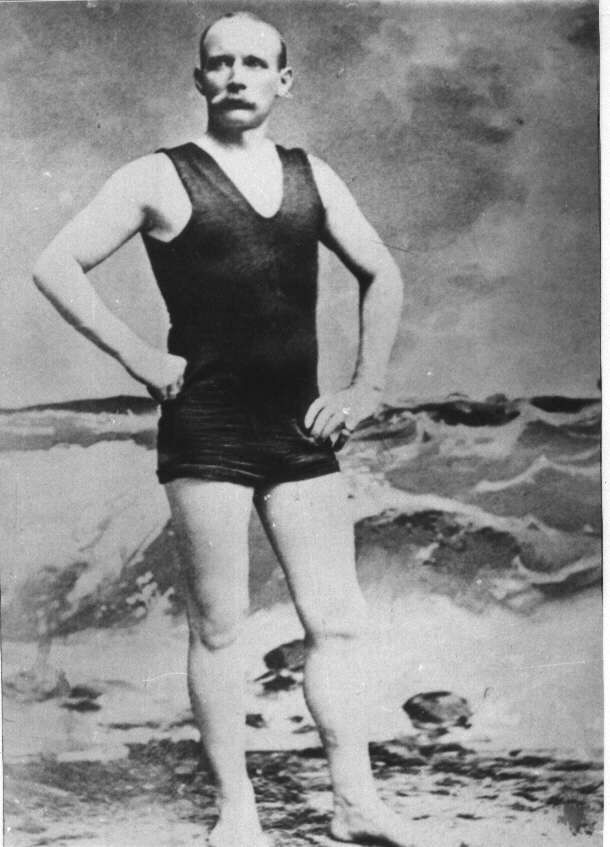
Capt. Matthew Webb, a legendary figure in the annals of swimming history, is best remembered for his historic and grueling swim across the English Channel. On August 25, 1875, Webb defied the odds by swimming from Dover, England, to Calais, France, without the aid of artificial devices. His 21-hour and 45-minute feat against the channel's turbulent currents and chilling waters cemented his status as a hero and an icon in the world of competitive swimming.
Webb's journey was more than a remarkable physical achievement; it was also a testament to his bravery and determination. Earlier in his career, as a second mate aboard the Cunard Line ship "Russia," Webb's heroism was evident when he risked his life to rescue a passenger lost in the mid-Atlantic Ocean. Although the passenger was never found, Webb's valiant efforts earned him the Stanhope Medal and £100.
Following his Channel swim, Webb enjoyed a period of fame and became a celebrated figure, performing swimming exhibitions and stunts. However, his fortunes began to wane by 1883. In an attempt to rejuvenate his career, Webb undertook a perilous challenge: to conquer the Lower Niagara River rapids. This stunt, considered by many to be a suicide mission, took place on July 24, 1883. Despite wearing the same bathing suit from his Channel crossing, Webb's endeavor ended tragically. Within minutes of entering the rapids, he disappeared, and his body was later recovered four days later in Lewiston. The official cause of death was listed as "crushing" due to the immense pressure of the water.
Capt. Webb's legacy is honored in various ways, including a monument erected by his brother, Thomas, in their hometown of Dawley with the inscription "Nothing great is easy," and a bust in Dover. In Niagara Falls, Webb rests in the "Stranger's Rest" section of Oakwood Cemetery, alongside fellow pioneers such as Annie Edson Taylor, who famously went over the Falls in a barrel, and Carlisle Graham, who also challenged the rapids in a barrel.
Capt. Matthew Webb's daring spirit and unparalleled achievements remain an enduring inspiration, commemorated through memorials and the tales of his extraordinary feats.
Maud Willard
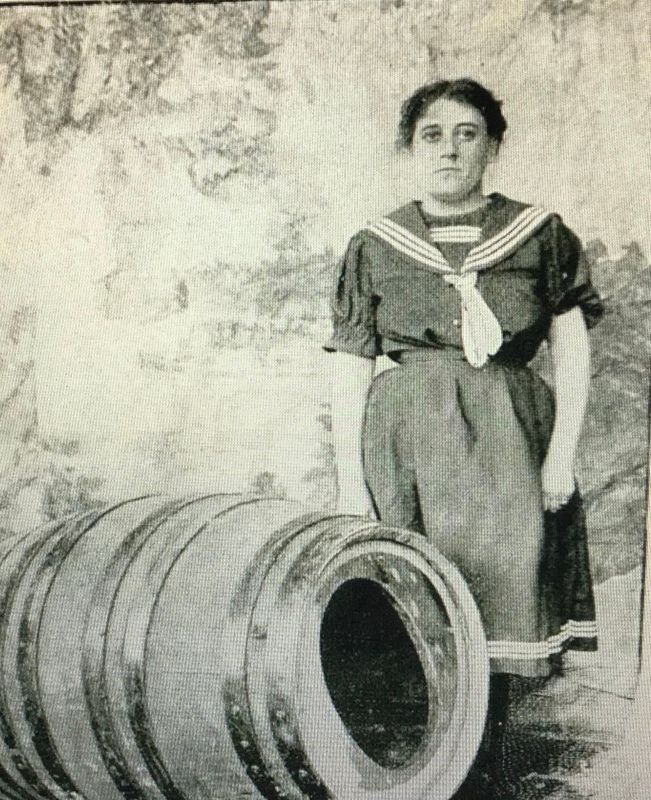
Maud Willard, a variety actress from Canton, Ohio, is remembered for her ill-fated attempt to navigate the treacherous Whirlpool Rapids of Niagara Falls in 1901. Born in 1876, Willard's venture into the realm of daring stunts was marked by both audacity and tragedy.
On the afternoon of September 7, 1901, Willard embarked on a perilous journey through the Whirlpool Rapids in a barrel previously used successfully by Carlisle D. Graham. The barrel, an oak cask designed to withstand the intense currents, was tightly sealed with only a small air hole for ventilation. As the barrel was pulled into the whirlpool, it became ensnared in the violent eddies of the rapids, tossing violently for hours.
Despite Graham's successful swim through the lower rapids as part of the same exhibition, Willard's journey ended in tragedy. Her barrel was caught in the whirlpool for approximately six hours before it was finally recovered at 10:00 p.m. By then, Willard had suffocated inside the barrel. The presence of her small fox terrier, which had accompanied her, was a poignant detail of the ordeal, as the dog was found alive but did not prevent the tragic outcome for Willard.
Willard's death marked a somber chapter in the history of Niagara Falls' daring exploits and highlighted the perils faced by those who challenged its mighty waters. Her story, reported briefly by the New York Press, remains a poignant reminder of the dangers inherent in such audacious feats.
LeRoy Williams
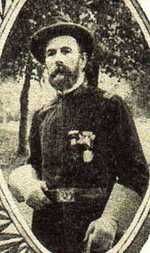
LeRoy Williams, a distinguished Civil War soldier and Medal of Honor recipient, was born in Oswego, New York, on March 16, 1844. His courageous actions during the American Civil War, particularly his heroism at the Battle of Cold Harbor, earned him one of the highest military honors.
Williams enlisted in the 129th New York Volunteers, later redesignated as the Eighth New York Heavy Artillery, in July 1862, at the age of eighteen. He quickly rose through the ranks from private to sergeant and was commissioned as a second lieutenant in October 1864. By April 1865, he had achieved the rank of first lieutenant.
On June 3, 1864, during the brutal and chaotic Battle of Cold Harbor, Williams displayed exceptional bravery. Amidst the ferocious fighting and under the cover of darkness, he led a small team to recover the body of Colonel Peter A. Porter, who had been killed close to enemy lines. Despite the danger of approaching within a few feet of Confederate pickets, Williams and his men successfully brought the Colonel’s body back within Union lines, a feat that exemplified his valor and commitment.
For this act of bravery, Williams was awarded the Medal of Honor in 1898, at the age of fifty-three. His citation recognized his voluntary exposure to enemy fire and his critical role in recovering Porter's body.
Following the war, Williams settled in Niagara Falls, New York. He was buried with honor in Oakwood Cemetery, where his grave is now marked by a bronze plaque acknowledging his Medal of Honor status. Williams's legacy is preserved by the Buffalo Civil War Round Table and the broader community that remembers his valor and sacrifice.
LeRoy Williams passed away on March 7, 1901, and his resting place continues to serve as a tribute to his extraordinary service and courage. His story is a poignant reminder of the sacrifices made by countless individuals during one of America's most tumultuous periods.
What's in a (street) name?
Many of our residents have had the honor of having a local street named after them.
Want to hear more about our residents? Take a tour!
Our website is the tip of the iceberg when it comes stories of those resting at Oakwood. There's no better way to learn our history than with an Oakwood tour.
